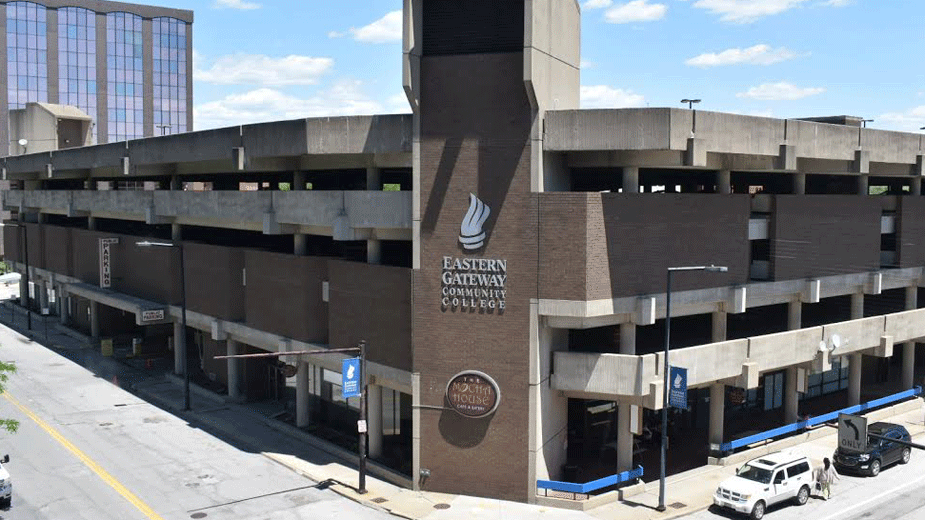YOUNGSTOWN, Ohio – Busy schedules, the evolving definition of a “traditional” college student and the pandemic have led to major changes in higher education here and nationwide.
Online learning programs are becoming more common at both smaller and larger institutions nationwide, partly because of the COVID-19 pandemic and partly because of enrollment rates decreasing in American colleges and universities.
Ohio universities have seen the worst of the decrease in undergraduate enrollment since 2010, reports the National Center for Education Statistics.
The COVID-19 pandemic forced programs to be taught online, leaving thousands of students unsure of the value of their education. Since late 2021, the pandemic restrictions have eased and students have returned to in-person classes. But data from the National Student Clearinghouse Research Center shows enrollment rates have not seen a rebound.
Local community colleges, however, continue to see interest increase in online programs.
Eastern Gateway’s ONLINE GROWTH
Eastern Gateway Community College, with its Youngstown campus at 101 E. Federal St., has “seen a growth in online programs over the years. So the current focus is on supporting these learners,” says Christina Wanat, senior vice president and chief student affairs officer.
From adding tutoring and accessibility services to making more academic advisers available on evenings and weekends, Eastern Gateway is expanding support in an online environment for its students, Wanat says.
A 2021 study found Eastern Gateway was among 10 community colleges and career schools nationally with the highest enrollment increases in fall 2020. In its findings, OnlineU – a research company– reported fall enrollment at the community college was 40,036, a 56.1% increase over its fall 2019 enrollment of 25,648. That’s a gain of 14,388 students.
Eastern Gateway offers more than 20 online college credit programs and career accelerator noncredit programs. Among the courses are health care, business, information technology, public services and teacher education. Overall, the college offers 41 in-seat, online and hybrid programs. Fifteen noncredit programs are also offered.
Additionally, smaller programs – some online and some in-person – that can be completed in one to two years and directly feed into jobs continue to rise in popularity.
Michael Geoghegan, president of Eastern Gateway Community College, says students “are succeeding in programs that train them to enter the workforce career-ready.”
The flexibility offered by Eastern Gateway’s start dates makes it easier for online students to fit courses into their schedules, he notes. The college offers staggered start dates throughout the year so that students can easily pick up classes depending on the availability they have for learning.
The community college “completed the spring semester in May with over 42,000 students enrolled and the summer semester has just under 23,000 students,” says Cristen Tarquinio, director of digital media and adjunct instructor.
“Our students typically work part- or full-time jobs and are raising families. So online courses work for their busy lives that don’t allow them to take classes in-seat,” Tarquinio says.
SHENANGO CAMPUS FLEXIBILITY
Penn State Shenango, a satellite campus for Penn State University, enrolls about 400 students, says Jo-Anne Carrick, campus director.
The branch campus has two- and four-year programs that allow students to complete baccalaureate or associate degrees in business, communications, cybersecurity, supply chain management or health care programs such as nursing.
Online learning for Penn State has allowed more flexibility for students to complete their degrees. Penn State’s “World Campus” offers several fully online degree programs. But at the Shenango campus, only fully asynchronous classes are offered.
“The benefit of [fully asynchronous classes] is sometimes students have a prerequisite that they look at before they start courses in their major,” Carrick says. Online courses help students with complicated schedules stay on track with their academic plans, which benefits student athletes and nontraditional students, she adds.
Online tutoring also helps students who need more flexible options.
Still, Carrick says the majority of students at Penn State Shenango report on their evaluations that they do not like asynchronous classes, with most preferring in-person instruction. She suggests this may be because students in the area do not have reliable internet access.
“During the pandemic, we allowed [students] to sit in the parking lot or later come into the student cafeteria and study areas so they could have internet access,” Carrick says. “The [internet] bandwidth in rural areas can be the problem.”
CHANGES AT YSU
The traditional college experience is also changing. It is now easier and more attainable for students to complete degree programs in online formats. This is leading many colleges to reimagine what their campuses will look like in the coming decades.
For example, Youngstown State University elected to renovate its student union and decrease the amount of space to accommodate the predicted smaller number of students the university will begin to see.
“The new student union would have a smaller square footage due to more efficient use of space, department relocations, and in response to the decrease in students at the university,” says Joy Polkabla Byers, associate vice president.
Enrollment at YSU has been declining since 2018, according to data on its website, and the university has increased classes offered in online modalities.
YSU offers 40 fully online programs where students can earn certificates, licenses and degrees in business, criminal justice, education and health care. Additionally, since the pandemic, the university has changed some modalities of it general education courses to provide online options for students.
